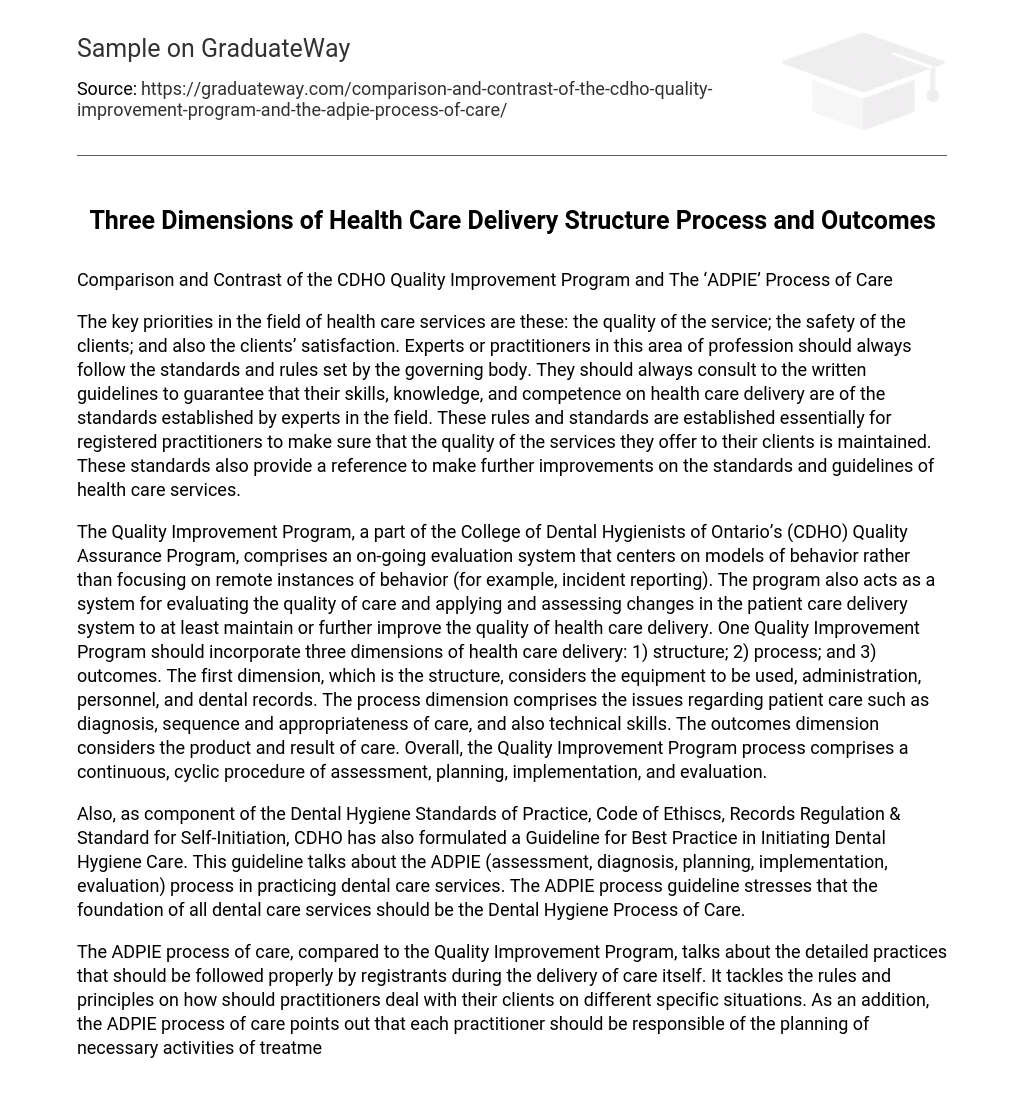Comparison and contrast of the CDHO Quality Improvement Program and the ‘ADPIE’ process of care.
The key priorities in the field of healthcare services are quality, safety, and client satisfaction. Professionals in this area must adhere to the standards and rules set by governing bodies. They should consult written guidelines to ensure their skills, knowledge, and competence in healthcare delivery meet established standards. These rules and standards exist to maintain the quality of services offered to clients by registered practitioners. They also serve as a reference for further improvements on healthcare service guidelines.
The Quality Improvement Program is a part of the College of Dental Hygienists of Ontario’s (CDHO) Quality Assurance Program. It comprises an ongoing evaluation system that centers on models of behavior rather than remote instances of behavior, such as incident reporting. The program also acts as a system for evaluating the quality of care and assessing changes in the patient care delivery system to maintain or further improve healthcare delivery quality.
One Quality Improvement Program should incorporate three dimensions of healthcare delivery: structure, process, and outcomes. The first dimension, structure, considers equipment use, administration, personnel, and dental records. The process dimension comprises issues regarding patient care such as diagnosis sequence and appropriateness of care along with technical skills. Finally, the outcomes dimension considers the product and result of care.
Overall, the Quality Improvement Program process involves a continuous cyclic procedure that includes assessment planning implementation and evaluation.
As a component of the Dental Hygiene Standards of Practice, Code of Ethics, Records Regulation & Standard for Self-Initiation, CDHO has formulated a Guideline for Best Practice in Initiating Dental Hygiene Care. This guideline discusses the ADPIE (assessment, diagnosis, planning, implementation, evaluation) process in practicing dental care services. The ADPIE process guideline emphasizes that the foundation of all dental care services should be the Dental Hygiene Process of Care.
The ADPIE process of care focuses on the detailed practices that registrants should follow during the delivery of care. It outlines rules and principles for practitioners to follow when dealing with clients in specific situations. Additionally, the ADPIE process emphasizes that each practitioner is responsible for planning necessary treatment activities, following the CDHO Records Regulation.
A similarity between the Quality Improvement Program and the Guideline for Best Practice is that they are both in accordance with the CDHO codes. These two guidelines and principles are used by the CDHO governing board and dental healthcare practitioners to maintain or improve the quality of dental hygiene services in Ontario. However, unlike the Guideline for Best Practice (which follows the ADPIE process), the Quality Improvement Program focuses on improving dental healthcare by assessing data from previous incidents. The program develops strategies by evaluating former cases of dental health service to further improve practitioner quality in Ontario. In contrast, the ADPIE process serves as a manual on how to deal with specific aspects of dental care.





